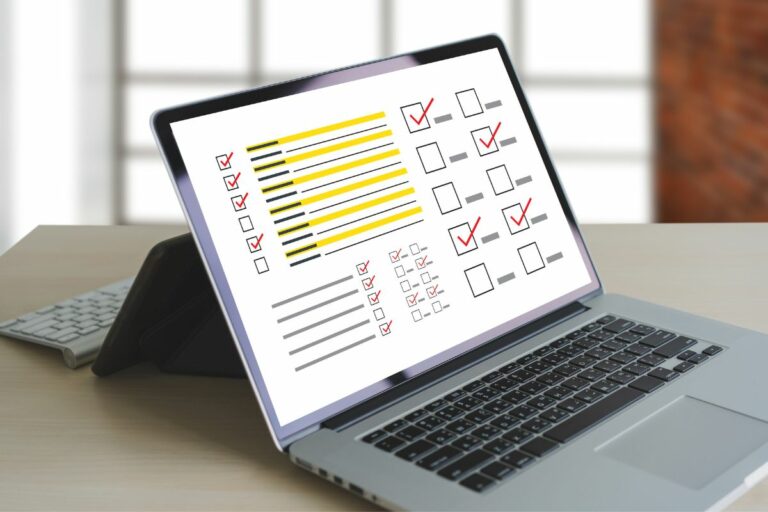Create Your Daily Voting Poll
Understanding the Concept of Daily Voting Polls
Daily voting polls, as their name suggests, are daily interactive sessions wherein individuals cast their vote on a particular topic or question. Primarily, they serve as an effective tool for data collection and gauging public opinion on trending topics. With their quick turnaround time and easy accessibility, these polls command immense popularity across various online platforms, ranging from social media sites to professional network portals.
The concept of a daily poll goes beyond merely casting votes, it allows individuals an opportunity to express their viewpoint and participate in shaping collective opinions. Not only do these polls enable real-time interaction, but they also provide actionable insights that can be used for strategy formulation, decision-making, and trend identification. Therefore, understanding the concept of a daily voting poll is crucial for anyone seeking to leverage the enormous potential of real-time data and analytics.
The Importance of Daily Voting Polls
A significant tool for public opinion insight and real-time feedback, Daily Voting Polls are instrumental within our ever-evolving digital landscape. They offer an immediate gauge of public sentiment regarding crucial matters, exemplified by the well-regarded Reuters Ipsos Daily Tracking Poll. This poll provides political parties, the general public, and various stakeholders with valuable information about national trends, sentiments, and perceptions, enabling more informed decision-making.
The Smerconish Daily Poll furthers this utility by harnessing the potential of instantaneous public opinion. It provides a platform for the active participation of thousands of individuals, allowing them to voice their opinions on critical issues. This sort of engagement not only encourages democratic discourse but also reveals valuable data. Polls, such as Smerconish, exemplify the use of this real-time data, impacting everything from policy direction to predictive analysis. These cases illuminate the critical role that such daily voting polls hold.
Choosing the Right Platform for Hosting Daily Voting Polls
The critical first step in launching a voting poll is the selection of an ideal platform. Today, there are numerous platforms available, varying in their features, capabilities, and compatibility. The platform should inherently resonate with your goal, whether you aim to garner opinion on a socio-economic survey or intend to conduct something on broader national lines like the Daily Presidential Tracking Poll – Rasmussen Reports. This platform is known for its robust architecture and accurate tracking, aspects that go a long way in uplifting the effectiveness and credibility of your daily voting polls.
Deciphering the features on these platforms also becomes quite crucial. Some platforms may provide access to innovative tools and analytics to aid in structuring and interpreting your Daily Poll Questions effectively. It is essential to ensure that the platform offers a seamless user experience for democratic participation, whether it be in terms of design, navigation, or responsiveness. Every platform should ultimately aim to stimulate user engagement and foster inclusivity, without compromising on ease and simplicity. The use of polling platforms should not just be constrained to users with advanced technical skills but should ideally be a democratic tool accessible to everyone interested.
The Role of Audience Analysis in Daily Voting Polls
Audience analysis has always been a pillar of any research strategy, playing a truly instrumental role in developing and implementing a daily voting poll. Its pertinence was prominently exhibited in the Gallup Daily Tracking Poll Presidential Race. By understanding the diverse characteristics of the target population, the poll was able to fine-tune the questioning strategies and effectively assess the public sentiment regarding the presidential candidates. It helped provide a comprehensive overview of the voters’ predispositions, hence giving the campaign teams insightful data to improve their strategies.
Another notable mention concerning the application of audience analysis is the KHOU Daily Poll. This organization leaves no stone unturned in comprehending the political, social, economic, or psychological factors that influence the voters’ decisions. Voters’ profiles and behaviors get dissected, ensuring the voting questions align appropriately with the audience’s understanding and their concerns get adequately addressed. An in-depth audience analysis allows them not only to design the polls that stir public interest but also to obtain responses that reflect the true public perspective.
Strategies for Formulating Effective Questions
One of the essential elements in crafting a compelling survey rests in the formulation of effective questions. This is crucial in enticing engagement and earning participants’ completion. For instance, the Swagbucks Daily Poll ensures that these questions are tailor-made, straightforward, and objective, catering to users of different cognitive capacities. This approach fosters two key factors: pursuance and attentiveness, primarily engendering reliable answers while achieving a high response rate.
Moreover, it’s essential to note that confusion is a survey’s worst enemy. Questions that appear too complex or convoluted often deter potential respondents, effectively decreasing the overall participation rate. The experts behind the reputable LA Times Daily Tracking Poll understand this and consistently ensure that their questions embrace simplicity and clarity. A clear structure and crisp language not only minimize confusion but also facilitate easier analysis of responses, leading to more accurate and useful insights.
To ensure the formulation of effective questions, several strategies can be adopted. These include:
- Ensuring Clarity: Questions should be clear and easy to understand. Avoid using jargon or complex language that could confuse respondents.
- Keeping it Simple: Simplicity is key in formulating effective survey questions. The question should not be too long or complicated; instead, it should get straight to the point.
- Maintaining Objectivity: It’s important to avoid leading questions that might influence a respondent’s answer. The goal is to gather unbiased data, so each question must remain neutral and objective.
- Making it Relevant: Each question asked should have a purpose and relate directly to your research objectives. Irrelevant questions can lead respondents off-track and decrease response rates.
- Providing an Appropriate Range of Answers: If you’re asking multiple-choice questions, make sure all possible answers are included in the options provided. This will allow participants to choose an answer that accurately represents their thoughts or feelings on the subject matter at hand.
In addition, consider these points while crafting your survey:
- Use Open-Ended Questions Sparingly: While open-ended questions can provide deeper insights into participant perspectives, they also require more effort from respondents than closed-ended queries do—potentially discouraging participation.
- Test Your Survey Before Launching It Publicly: A pilot test with a small group of people allows for feedback on any confusing or problematic items before widespread distribution.
- Rotate Question Order When Possible: To prevent order bias (where earlier items affect responses to later ones), vary item sequence across different versions of your instrument if feasible.
By keeping these guidelines in mind when creating surveys, researchers can increase both response rate accuracy as well as the usefulness of collected data—a win-win situation for all parties involved!
Designing a User-Friendly Voting Poll
In the realm of daily voting polls, user-friendly design is a crucial determinant of audience participation. Primary examples of this are seen within the digital frameworks of the KOMO News Daily Poll and the UPI Daily Tracking Poll, where simplicity and intuitive design are the guiding principles. Both these platforms prioritize a seamless user interface that eliminates friction points and complexities, thereby encouraging higher rates of user involvement.
Crafting a user-friendly design entails thoughtful consideration of the user’s digital journey. A hallmark of the UPI Daily Tracking Poll is its emphasis on easy navigation, which boosts both accessibility and usability. Similarly, the KOMO News Daily Poll strikes a balance between aesthetic appeal and functionality, ensuring that visitors remain engaged but not overwhelmed. This strategic melding of form and function is what makes these daily voting polls effective and user-centric.
The Art of Crafting Engaging Poll Options
Crafting engaging poll options is an integral part of the polling process. Meticulous attention to the wording and sequencing of options can significantly influence the respondent’s understanding and perception, which in turn, can impact the results. The ABC Daily Tracking Poll exemplifies this principle. By providing clear, concise, and direct options, the ABC Daily Tracking Poll ensures that the respondents quickly grasp the concept being polled, thus increasing engagement and fostering informed responses.
This technique is also evident in the USC LA Times Daily Tracking Poll. They maintain coherence and connectivity between their poll options, thereby promoting continuity in the respondent’s thought process. This aspect not only facilitates efficient response collection but also helps discern nuanced opinion trends among the audience. By mastering the art of crafting engaging options, these polls ensure maximum participation and provide a reliable reflection of public opinion, offering vital insights for decision-making and strategizing.
Incorporating Visual Elements in Daily Voting Polls
The inherent power of visuals to boost user engagement in voting polls can never be underestimated. It’s crucial to strategically integrate apt visuals related to poll subjects to captivate and direct the users’ attention toward the importance of polling. This strategy has been utilized well by Investors Business Daily Tracking Poll, where they craftily embed graphs and charts to present past poll results. They do this not only to engage but also to keep their audiences informed about the polling trends, encouraging them to contribute their valuable votes.
In the world of daily voting polls, an organization that does commendable work in incorporating visual elements is Zogby Daily Tracking Poll. By leveraging engaging imagery, graphical illustrations, and well-thought layouts, they have been successful in enhancing user interactivity. They prioritize maintaining a balance between information and visual elements to deliver a more consumable and aesthetically pleasing experience for the users. Their strategic use of visuals adds greater context to their polls, facilitating a deeper understanding of the issues under consideration. It’s this visual-enhanced approach that helps them yield a higher response rate and furnish reliable data for decision-making.
Promoting Your Daily Voting Polls for Maximum Participation
Effectively marketing daily voting polls can significantly impact their success. This process ensures a broad reach, engaging a greater audience and resulting in higher participation numbers. One effective approach to promoting voting polls is through platforms such as MyPoints Daily Poll. Not only does this allow for significant exposure, but it also offers rewards to participants, incentivizing individuals to partake in the poll.
The WBZ Daily Poll offers another brilliant marketing strategy. Providing real-time results to participants, this platform proves to be active in generating interest and stimulating engagement. Broadcasting the polls on TV adds to the reach and influence, dramatically increasing the attention the poll gathers. Ultimately, efficient use of these platforms for promotion can foster tremendous audience participation, making the polls a success.
Analyzing Responses: Key to Effective Daily Voting Polls
Many organizations and pollsters recognize the integral part that response analysis plays in the successful execution of daily voting polls. Among the various tools available for this task, the People’s Pundit Daily Poll platform stands out because it provides robust features that enable users to dissect data meticulously. The platform allows for tracking response patterns, identifying irregularities, and understanding demographic information, which can be pivotal in strategizing campaigns or formulating policies.
On the other hand, traditional methods of analyzing polling data exist too, such as the approach followed by the Graham Poll Daily Mail. This widely recognized poll in the UK presents the pulse of the nation on contemporary issues through a combination of quantitative data gathered from daily voting polls and finely detailed visual representations. The curated insights derived from these polling responses provide an alternative way to comprehend public sentiment and forecast trends. This blend of old and new methodologies promotes clearer communication of results and richer discussions.
Addressing Privacy Concerns in Daily Voting Polls
In the digital age, where data breaches and privacy invasions are commonplace, ensuring the privacy of respondents in daily voting polls becomes paramount. This not only enhances user trust but also ensures compliance with data protection regulations. When designing daily voting polls, robust measures must be integrated to secure personal data. These could include anonymizing respondent details, implementing firewall protections, and incorporating stringent data handling protocols.
Moreover, there must be transparency on how the data collected will be used. Providing a clear and concise privacy policy not only abides by many nations’ legislations but also fosters a sense of trust with the audience, encouraging their participation. It is equally essential to obtain informed consent from the participant before collecting and processing any personally identifiable data. Thus, addressing privacy concerns while conducting daily voting polls not only covers legal bases but also promotes a user-friendly and trustworthy environment for public engagement.
Ensuring Accessibility in Your Daily Voting Polls
Accessibility in daily voting polls is not only a legal requirement in various jurisdictions, but it also broadens the audience reach, enriching the polling results with diverse responses. By ensuring a broad spectrum of citizens can access and interact with your polls, you enable a wider, representative participation. This said, it may sound straightforward, but it challenges designers and developers to think from multiple perspectives. Inclusivity means considering individuals with various types of disabilities—physical, cognitive, visual, auditory, and more.
Adapting your daily voting polls for easy navigation and compatibility with assistive technologies is integral to this task. An accessible poll design brings clear layouts, simple language, keyboard-friendly functions, and alternative texts for visuals into play. This aligns with the Web Content Accessibility Guidelines (WCAC), lowering barriers and inviting more interaction. Furthermore, accessibility options such as large text, high-contrast colors, or screen reader compatibility should not be hidden away. Instead, they should be easily locatable, ensuring all users feel included and facilitated from the moment they engage with your poll.
Leveraging Social Media for Your Daily Voting Polls
Social media is an indispensable tool when it comes to driving participation in daily voting polls. Platforms like Facebook, Twitter, Instagram, and LinkedIn not only have vast user bases but also boast tailored algorithms designed to increase content visibility, based on user interaction. Consequently, it streamlines the task of reaching a wide range of audience spaces that conventional modes of communication can often miss out on.
The trend of sharing catchy, thought-provoking content on social media has proven to be highly engaging, thereby improving participation rates. By sharing your daily voting poll on various social media platforms, you can increase overall visibility, reach, and engagement. A key consideration in leveraging these platforms effectively is understanding each platform’s unique audience and adapting your content accordingly. With a thorough strategy, you can maximize the driving force that social media provides to your daily voting poll initiatives.
Maintaining Engagement in Ongoing Daily Voting Polls
Boosting participation in daily voting polls calls for unique strategies to maintain user engagement. The process ought to extend beyond the initial announcement and promotion of the poll. Holding the interest of your audience encompasses routine reminders, updates, and sneak peeks of results. Additionally, engagement can be enhanced by acknowledging participant’s input as well as rewarding frequent voters.
To sustain the momentum of your daily voting polls, consider incorporating gamification elements. This strategy transforms the poll into an intriguing challenge, where participants earn points, badges, or rewards, triggering a sense of achievement and encouraging further participation. In tandem, active communication through various channels like e-mail, instant messaging, or social media can help remind potential voters about your ongoing polls, ensuring continuous participation and interaction.
Best Practices for Running Successful Daily Voting Polls
In orchestrating successful daily voting polls, strategic timing plays a crucial role. It is critical to ascertain the most active hours of your audience and schedule the voting polls accordingly. This tailored approach not only garners a high response rate but also fosters better engagement. Additionally, strive to maintain a standard duration for your polls; a time frame that isn’t too short to miss out on votes, and not too long to lose the audience’s attention.
With the surge in digital penetration, it becomes imperative to leverage the power of social media platforms to maximize participation in your daily voting polls. Cross-promoting your polls on popular platforms like Facebook, Twitter, LinkedIn, and Instagram can help reach a wider audience, thereby increasing participation rates. Real-time updates, notifications, and reminders can further enhance user interaction, creating a ripple effect of improved visibility and engagement.
Daily Voting Poll FAQs
What are daily voting polls?
Daily voting polls are tools used to gather feedback, opinions, or responses from a target audience daily. They are often used in market research, public opinion polling, and in various digital platforms to engage audiences.
Why are daily voting polls important?
Daily voting polls are important as they provide ongoing feedback, enable real-time interaction with your audience, and can provide valuable insights into audience preferences, behavior, and opinions. This can help in informed decision-making and strategy formulation.
How do I choose the right platform for hosting daily voting polls?
When choosing a platform for hosting daily voting polls, consider factors such as ease of use, customization options, data analysis capabilities, and audience reach. The platform should also be secure and reliable.
What is the role of audience analysis in daily voting polls?
Audience analysis is crucial in daily voting polls as it helps in understanding the preferences, behavior, and needs of your audience. This information can then be used to formulate effective questions and craft engaging poll options.
How can I design a user-friendly voting poll?
To design a user-friendly voting poll, ensure that your questions are clear and easy to understand. The voting process should also be simple and quick. Furthermore, the poll should be visually appealing and accessible across various devices.
How do I promote my daily voting polls for maximum participation?
You can promote your daily voting polls through various channels such as email, social media, and your website. You can also use incentives, engaging content, and timely reminders to encourage participation.
What are the best practices for running successful daily voting polls?
Best practices for running successful daily voting polls include understanding your audience, formulating effective questions, designing a user-friendly poll, promoting your poll effectively, analyzing responses, and addressing privacy concerns.
How can I ensure the accessibility of my daily voting polls?
To ensure accessibility, make sure your daily voting polls can be easily accessed and used by people with varying abilities. This may include providing alternative text for images, using large, readable fonts, and ensuring compatibility with screen readers.
Social media can be leveraged for daily voting polls by posting the polls on your social media pages, encouraging followers to participate, and sharing the results. Social media platforms also offer various tools for hosting and promoting polls.
How do I maintain engagement in ongoing daily voting polls?
To maintain engagement in ongoing daily voting polls, provide regular updates, share results, and respond to comments or queries. You can also use various strategies such as rewards, competitions, and interactive content to keep your audience engaged.
- What Polls Reveal About Sleeping Together Early and Long-Term Relationship Success - July 7, 2025
- How to Design a Hard Harry Potter Trivia Challenge - October 4, 2023
- How to Design a Dear Peachie Makeup Preference Poll - October 4, 2023













